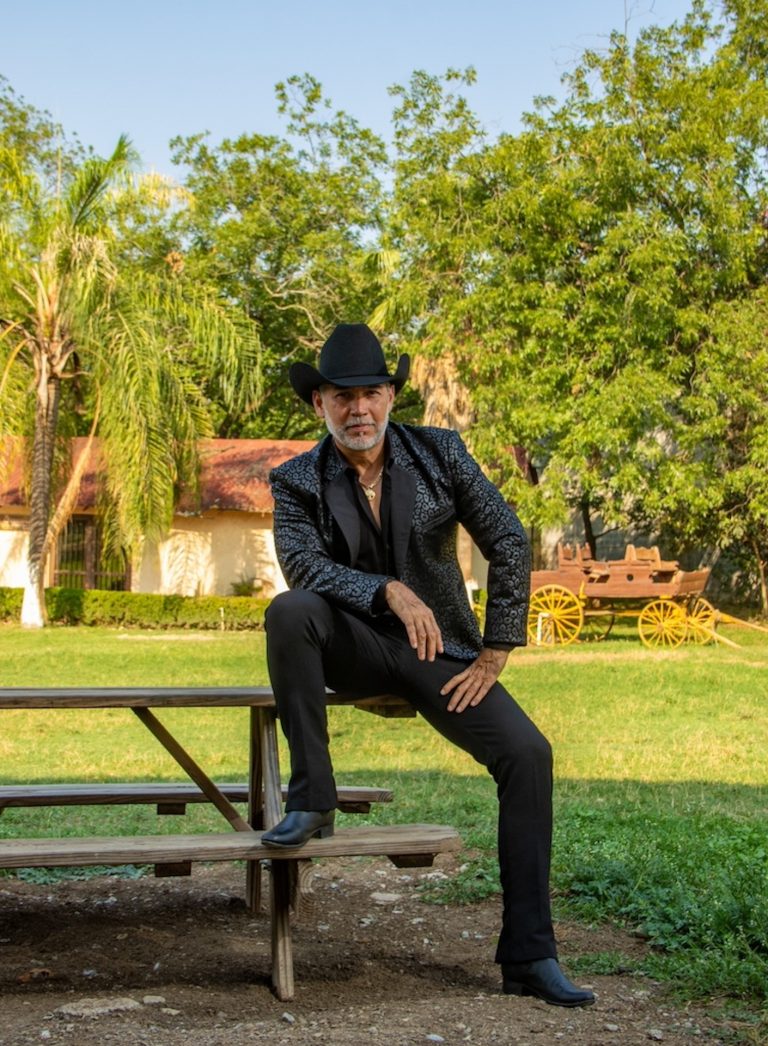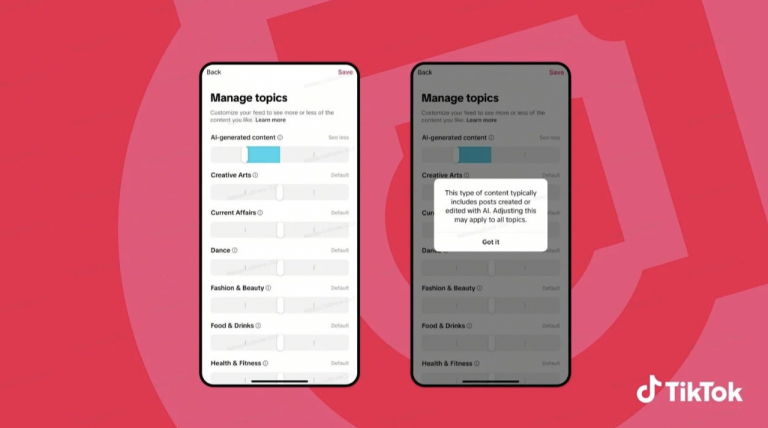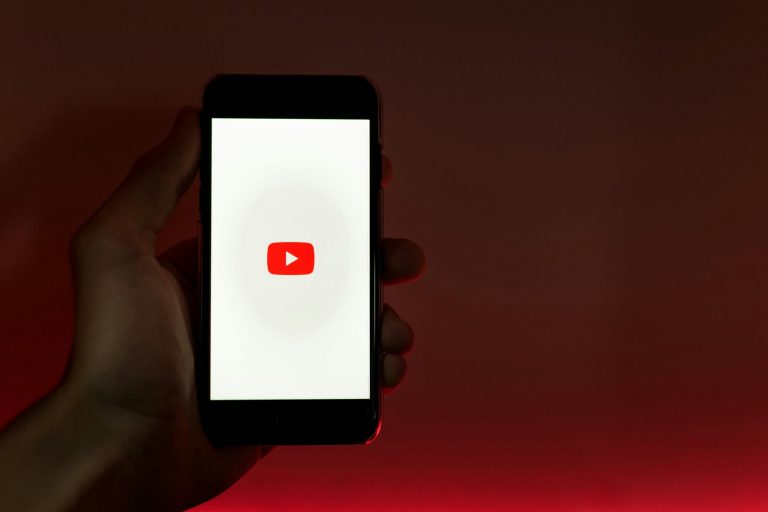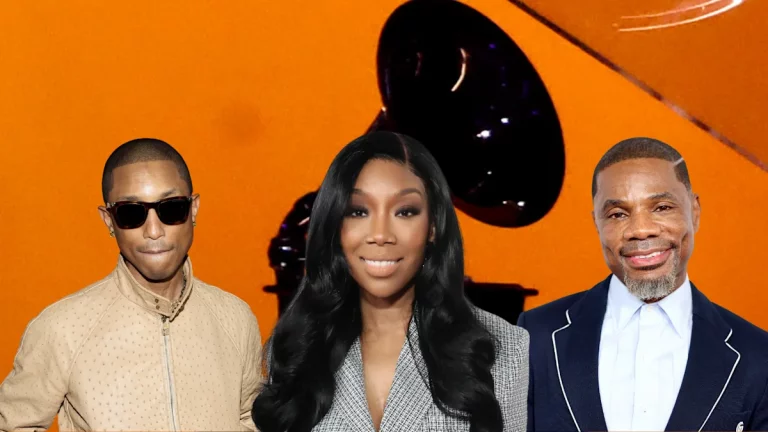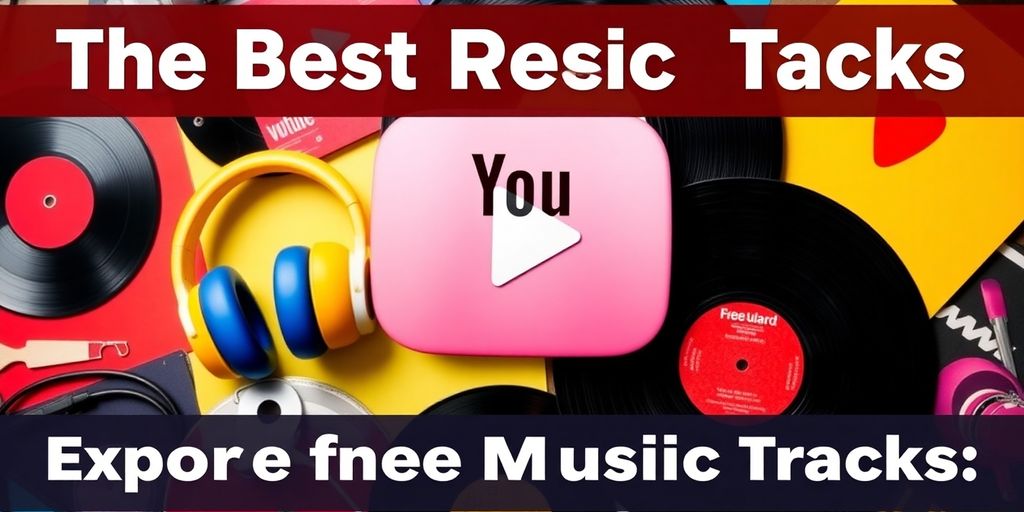
If you’re looking to spice up your YouTube videos without shelling out cash for music, you’re in luck. YouTube offers a treasure trove of free music that can help elevate your content. This guide will walk you through where to find the best free tracks, how to use them properly, and tips for picking the right tunes for your videos. Let’s jump in and discover how you can get music for free on YouTube!
Key Takeaways
- YouTube has its own Audio Library with thousands of free tracks.
- Always check if the music requires attribution before using it.
- Explore various genres and moods to find the right fit for your content.
- Understand different music licenses to avoid copyright issues.
- Experiment with different styles to see what resonates with your audience.
Exploring YouTube’s Audio Library
YouTube offers a treasure trove of free music and sound effects through its Audio Library. It’s a great place to start if you’re on a budget or just need something quick for your project. Let’s take a look at how to make the most of it.
Accessing Free Tracks
Finding the YouTube Audio Library is pretty straightforward. Just head to YouTube Studio, then look for "Audio Library" in the left-hand menu. Once you’re there, you’ll see a huge selection of tracks and sound effects ready to use. You can browse by genre, mood, instrument, and more. It’s all designed to be easy to search, so you can find what you need without too much hassle. Don’t forget to use the search bar if you have something specific in mind!
Understanding Attribution Requirements
Not all music in the YouTube Audio Library is completely free to use without giving credit. Some tracks require attribution, meaning you need to mention the artist in your video description. Always check the licensing details for each track before you use it. It’s usually a simple copy-and-paste job, but it’s important to do it right to avoid any copyright issues. If a track requires attribution, it will clearly state that next to the download button. Ignoring this can lead to problems down the road, so always double-check! You can find royalty free music here.
Navigating Genres and Moods
The YouTube Audio Library has a ton of different genres and moods to choose from. Whether you need something upbeat for a vlog, dramatic for a short film, or just some chill background music, you can probably find it there. Here’s a quick look at some of the options:
- Genre: Pop, Rock, Classical, Electronic, Hip Hop, Country, etc.
- Mood: Happy, Sad, Angry, Romantic, Dramatic, Calm, etc.
- Instrument: Piano, Guitar, Drums, Strings, Synth, etc.
It’s worth spending some time exploring the different categories to get a feel for what’s available. You might be surprised at what you find. Don’t be afraid to experiment and try out different tracks to see what works best for your video. You can also save your favorite tracks for later use. Just click the star icon next to the track, and it will be added to your favorites list.
Top Websites for Free Music

YouTube is great, but sometimes you need music from other places. Luckily, there are tons of sites offering free music for your videos. The trick is knowing where to look and understanding the rules.
SoundCloud’s Creative Commons
SoundCloud is still a big deal for finding new artists. The catch is that most music isn’t automatically free to use. You usually need to ask the artist for permission. But here’s a cool thing: some artists are happy to let you use their music if you just ask! One person I know says they get a "yes" about 90% of the time. It’s worth a shot if you want something unique.
Free Music Archive
Okay, so the Free Music Archive (FMA) can be a bit hit or miss. I’ve spent hours on there and come up empty. But, I checked it out again recently and found some decent tracks. It might take some digging, but you could find something cool. It’s worth another look, especially if you’re after something a little different.
Bensound and Other Resources
Bensound is a solid option for royalty-free music. There are other sites too, like:
- FreePD: Everything is 100% free, and no attribution is needed.
- Free Stock Music: They have over 400 free songs, but you usually need to give credit.
- Amazing Music Tracks: They have a clear "free tracks" section, which is super helpful.
Finding the right music can take time, but it’s worth it. Make sure you always check the licensing terms before using any music in your videos. It’ll save you a headache later on.
Understanding Music Licensing
Okay, so you’ve found some awesome free music. Great! But before you slap it into your video and call it a day, let’s talk about something super important: music licensing. It might sound boring, but understanding this stuff can save you from a world of trouble down the road. Trust me, copyright claims are no fun.
Public Domain Music
Public domain music is like the wild west of audio. It’s music that’s not protected by copyright, meaning you can use it however you want. Think old classical pieces or songs where the copyright has expired. You can use it, remix it, sell it – whatever! No need to ask permission or pay anyone anything. Just make sure it’s actually in the public domain, because sometimes things get mislabeled. It’s a great way to get free music, but the selection can be limited. You can find a lot of this music in the Warner/Chappell Music’s database.
Royalty-Free Music Explained
"Royalty-free" doesn’t mean free as in beer. It means you pay a one-time fee for the right to use the music. You don’t have to pay royalties every time your video gets played or viewed. Think of it like buying a license to use the music. There are still rules, though! Make sure you read the fine print. Some licenses only allow you to use the music for certain types of projects, or up to a certain audience size. Always double-check the terms before you commit. Here’s a quick rundown:
- One-time fee: Pay once, use many times (within the license terms).
- Specific terms: Usage restrictions apply (commercial vs. non-commercial, etc.).
- No recurring payments: Avoid ongoing royalty obligations.
Creative Commons Licenses
Creative Commons (CC) is a non-profit organization that provides standardized licenses for creators to share their work while still getting credit. It’s a cool idea, but it can be a little confusing. There are different types of CC licenses, each with its own set of rules. Some let you use the music for commercial purposes, while others are only for non-commercial use. Some require you to give credit to the artist, while others don’t. Some let you modify the music, while others don’t. It’s like a choose-your-own-adventure of copyright. Here’s the deal:
- Attribution (CC BY): You must give credit to the creator.
- Non-Commercial (CC BY-NC): Only for non-business use.
- Share Alike (CC BY-SA): If you modify the work, you must license your new work under the same terms. This is similar to Creative Commons licenses.
Understanding these licenses is key to avoiding copyright strikes on YouTube. Always read the terms carefully and make sure you’re following the rules. It’s better to be safe than sorry!
Choosing the Right Music for Your Videos
Choosing the right music can really make or break your video. It’s not just about finding something that sounds good; it’s about finding something that fits. Think of it as the soundtrack to your story – it needs to match the visuals and the overall vibe you’re going for.
Matching Music to Content Mood
The music should complement, not clash with, the mood of your video. If you’ve got a funny skit, you probably don’t want a super serious, dramatic score. Conversely, a heartfelt documentary needs something more than just upbeat pop. Consider what emotions you want to evoke in your viewers. Is it excitement, relaxation, inspiration, or something else? The music should help amplify those feelings.
Considering Tempo and Instrumentation
Tempo and instrumentation are key elements. A fast-paced action scene needs music with a high tempo and driving beat, maybe with some intense percussion or electric guitars. A slow, reflective scene might benefit from a slower tempo and softer instruments like piano or strings. Think about how the music will interact with the visuals. Does the beat sync up with any actions on screen? Does the instrumentation complement the setting or characters?
Reviewing Licensing Requirements
This is where things can get tricky, but it’s super important. Before you use any music, double-check the licensing requirements. Even if a track is labeled as "free," it might still require attribution, or it might only be free for non-commercial use. Ignoring these requirements can lead to copyright strikes, takedown requests, and even legal trouble. Always read the fine print and make sure you’re following the rules.
It’s easy to get caught up in finding the perfect track and forget about the legal side of things. But trust me, taking a few extra minutes to understand the licensing is worth it in the long run. Nobody wants their video taken down because of a simple mistake. Plus, supporting artists by giving proper credit is just the right thing to do.
Tips for Using Free Music Effectively

Following Licensing Guidelines
Okay, so you’ve found some awesome free music. Great! But before you slap it into your video, double-check the licensing. Seriously, this is the most important thing. Read the fine print. Does it require attribution? Where should you put the credit? Some licenses are super specific, and ignoring them can lead to a copyright claim down the road. Nobody wants that!
Avoiding Copyright Issues
Even if a track is labeled "royalty-free" or "free to use," it doesn’t automatically mean you’re in the clear. Sometimes, there can still be underlying copyright issues. Maybe the person offering the music doesn’t actually own all the rights. It’s rare, but it happens. Do a little digging. See if you can find the original artist and confirm the license if you’re unsure. Also, YouTube’s Content ID system is pretty good at detecting copyrighted material, so if you get a claim, even on "free" music, take it seriously.
It’s always better to be safe than sorry. If you’re even slightly unsure about the licensing of a track, it’s best to find something else. There’s plenty of free music out there, so don’t risk it.
Experimenting with Different Genres
Don’t get stuck in a rut using the same type of music for every video. Branch out! Try different genres and see what works. You might be surprised at what you discover. A chill lo-fi track might be perfect for a vlog, but maybe a more upbeat electronic song would be better for a tutorial. Play around and see what fits the mood and style of your content. You can also use music to create contrast. For example, using a serious classical piece in a funny skit can be hilarious. Don’t be afraid to get creative!
Finding Music for Specific Video Types
It’s not a one-size-fits-all situation when it comes to music. What works for a vlog might be terrible for a gaming video. Let’s break down how to find the right tunes for different types of content.
Background Music for Vlogs
For vlogs, you want something that complements your voice and visuals without overpowering them. Think chill, acoustic, or upbeat pop – something that adds to the vibe without being distracting.
- Keep the volume low. The music should be felt, not heard.
- Avoid anything too dramatic or intense. Unless you’re going for a specific comedic effect, keep it light.
- Consider the overall tone of your vlog. Is it a travel vlog? A daily life vlog? Match the music to the theme.
I’ve found that starting with a ‘mood’ filter is super helpful here. YouTube’s audio library lets you search for things like ‘happy,’ ‘calm,’ or ‘upbeat,’ which can really narrow down your options.
Sound Effects for Gaming
Gaming videos are a whole different ballgame. Sound effects are key to creating immersion and excitement. You’ll need a mix of music and sound effects to really sell the experience.
- Use sound effects to highlight key moments. Think explosions, weapon sounds, and character actions.
- Choose music that matches the game’s genre. Epic orchestral scores for fantasy games, electronic beats for sci-fi, etc.
- Don’t be afraid to get creative. Experiment with different sounds and music styles to find what works best.
Mood Music for Tutorials
Tutorials need music that’s both engaging and unobtrusive. You want to keep viewers interested without distracting them from the information you’re presenting.
- Opt for instrumental tracks. Vocals can be distracting in a tutorial setting.
- Choose music with a consistent tempo. Avoid songs with sudden changes in pace or intensity.
- Consider the topic of your tutorial. A tech tutorial might benefit from electronic music, while a cooking tutorial could use something more acoustic.
Here’s a quick guide to get you started:
| Video Type | Music Style | Key Considerations |
|---|---|---|
| Vlog | Chill, Acoustic, Pop | Volume, Tone, Distraction |
| Gaming | Genre-Specific, SFX | Immersion, Excitement, Highlighting Key Moments |
| Tutorial | Instrumental, Steady | Engagement, Non-Distracting, Topic Appropriateness |
Maximizing Your YouTube Music Experience
Creating a Favorites Playlist
So, you’ve found some awesome free music on YouTube. Now what? Don’t let those gems get lost in the shuffle! Creating a dedicated playlist for your favorite tracks is a game-changer. It’s like having your own personal music library tailored specifically for your video projects. I usually name mine based on the video type, like "Vlog Music" or "Gaming Backgrounds." This way, when inspiration strikes, you’re not scrambling to remember that one perfect tune you stumbled upon weeks ago. It’s all right there, ready to go.
Using Filters for Efficient Searching
YouTube’s audio library is HUGE. Like, seriously massive. Sifting through it can feel like searching for a needle in a haystack if you don’t know what you’re doing. That’s where filters come in. They’re your best friend for narrowing down your search and finding exactly what you need. Here’s a quick rundown of filters I use:
- Genre: Obvious, but essential. Are you after something cinematic, upbeat, or chill?
- Mood: This is where you can get specific. Think "happy," "dark," "romantic," etc.
- Instrument: Looking for something with piano, guitar, or electronic elements?
- Duration: Super important for matching music to your video length. No one wants a track that cuts off abruptly.
- License Type: Make sure you’re only seeing tracks you’re actually allowed to use. Understanding copyright laws is key here.
I’ve found that combining multiple filters gives the best results. For example, if I need background music for a travel vlog, I might filter for "acoustic," "upbeat," and a duration of around 2-3 minutes. This helps me quickly find tracks that fit the vibe I’m going for.
Staying Updated on New Releases
The YouTube Audio Library is constantly being updated with new music. It’s worth checking back regularly to see what’s new. Here’s how I stay in the loop:
- Subscribe to relevant YouTube channels: Some channels focus specifically on showcasing free music for creators.
- Check the YouTube Audio Library’s "New Releases" section: YouTube often highlights new additions to the library.
- Follow music creators on social media: Many artists who offer free music also share their latest work on platforms like SoundCloud or Twitter.
Staying updated means you’ll always have fresh, exciting options for your videos. Plus, you might discover some hidden gems that no one else is using yet!
Wrapping It Up
So there you have it! Finding free music on YouTube doesn’t have to be a headache. With the right tools and a bit of patience, you can discover tracks that fit your videos perfectly. Remember to check the licensing rules, especially if you plan to use the music outside of YouTube. Don’t hesitate to try out different styles and genres until you find what clicks for your content. Music can really make or break a video, so take your time to choose wisely. Happy creating!
Frequently Asked Questions
What is the YouTube Audio Library?
The YouTube Audio Library is a collection of free music and sound effects that you can use in your videos. It’s available directly in YouTube Studio.
Do I need to credit the artist when using free music?
It depends on the track. Some songs require you to give credit to the artist, while others do not. Always check the requirements for each track.
Can I use YouTube music in videos on other platforms?
Not all tracks can be used outside of YouTube. Some require permission from the artist for use on other platforms.
What are Creative Commons licenses?
Creative Commons licenses allow artists to share their music for free, but they often require you to credit the artist or follow certain rules.
How can I find music that fits my video’s mood?
You can filter tracks by mood, genre, and tempo in the YouTube Audio Library to find music that matches the feeling of your video.
What should I do if I get a copyright claim?
If you receive a copyright claim, check if you followed the licensing rules. You may need to remove the music or contact the copyright holder.


